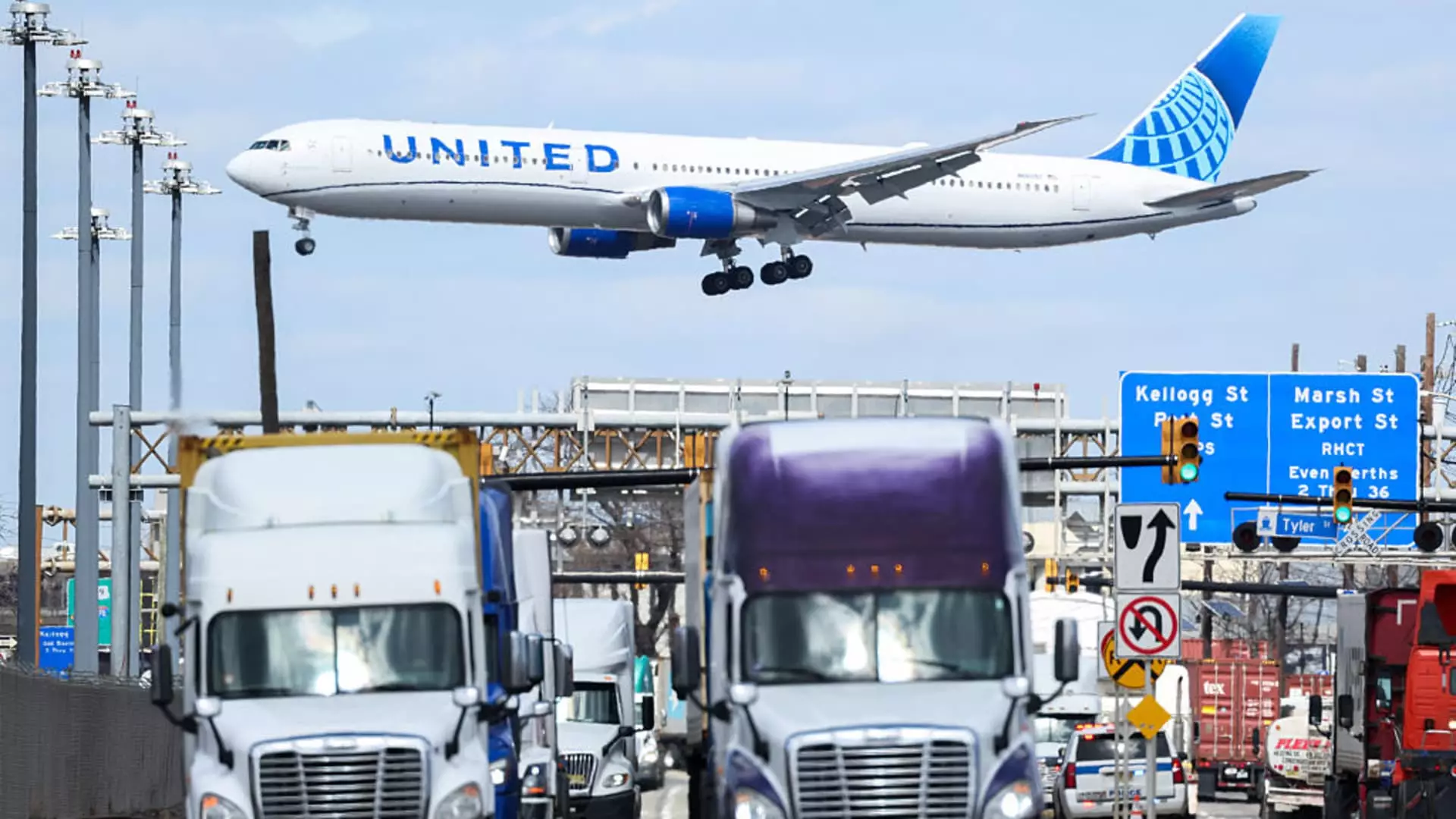In a strategic maneuver reflecting the nuanced landscape of domestic travel, United Airlines has announced a reduction in domestic flight capacity by approximately 4% starting this summer. This decision is not merely an operational adjustment; it signals an acute awareness of fluctuating consumer preferences as travelers increasingly lean towards more lucrative international bookings. Despite a backdrop of economic uncertainty and shifting consumer sentiment, this pivot emphasizes how airlines can adeptly navigate market dynamics.
Financial Resurgence amid Uncertainty
Remarkably, United Airlines reported a profitable first quarter, showcasing a dramatic turnaround with earnings hitting $387 million, or $1.16 per share, compared to a loss of $124 million during the same period last year. Such a substantial rebound underscores the resilience of the airline amidst broader economic concerns. The company’s ability to exceed Wall Street’s expectations—adjusted earnings of 91 cents per share against projections of 76 cents—offers a beacon of confidence, providing stakeholders with assurances of strong underlying demand, especially in premium cabins.
Exploring Revenue Trends
Unit revenue for domestic flights has seen a decline of 3.9% compared to last year, a stark juxtaposition to the 5% increase in international unit sales. This divergence unveils the growing trend of travelers willing to invest in higher-end travel experiences, which presents a strategic advantage for United. While domestic routes may be faltering, international travel is demonstrating resilience, suggesting that airlines can capitalize on premium customer segments even as economic uncertainties loom. With a total revenue of $13.21 billion, which reflects a 5% increase year-over-year, United exemplifies how strategically leveraging international demand can yield robust financial returns—even in a tightening domestic market.
A Competitive Landscape
United Airlines is not operating in a vacuum; its chief competitor, Delta Air Lines, has echoed similar concerns, recently refraining from reaffirming its full-year outlook amidst pervasive market uncertainties. This shared caution highlights the interconnectedness of the airline industry and the necessity for agility in adapting to shifting demands. United’s decision to maintain its full-year earnings projections—expecting adjusted earnings per share between $11.50 to $13.50—is a calculated risk that reflects confidence in its ability to navigate the landscape, potentially outpacing competitors.
Tapping into Premium Demand
The present climate not only reinforces the strengths of United Airlines but also underscores a pivotal shift toward premium offerings. Travelers are increasingly opting for extravagant experiences, raising the stakes in the airline industry. By focusing on premium-cabin bookings and international travel, United not only enhances its revenue potential but also crafts a differentiated brand image in a crowded marketplace. It is a timely reminder that amid economic fluctuations, airlines that adapt to consumer desires for luxury and enhanced experiences are likely to thrive.
United’s current trajectory serves as a testament to the sharpened focus on consumer demands, innovation, and strategic foresight, suggesting a bright outlook for the airline even when navigating turbulent economic waters.


Leave a Reply